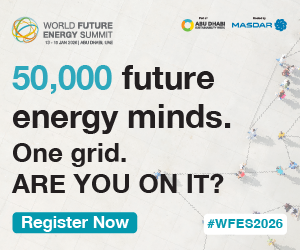Post - Blog
2018-2019 … the pivotal years for New Energy
- 6 years ago (2019-01-07)
- Junior Isles

By Jenny Carson, Senior Analyst , Delta-ee

WFES 2026 (World Future Energy Summit)
Decentralised energy, customers not meter points... who have needs, wants and preferences, services beyond commodity. These dynamics have now firmly moved from being on the periphery of the energy debate to front and centre. Most companies now recognise the direction in which the market is heading and it seems like we are approaching the cusp of change .
Developing the right strategy and tactics is, however, challenging – exciting, but challenging.
Looking back over 2018, three key New Energy trends to highlight:
- Flexibility – the penny has dropped . We see companies not only realising, but now acting, in light of the fact that value is shifting towards the timing of consumption and generation, rather than the quantity. Utility companies are, for example, changing the way they are organised internally, while others are making investments or acquisitions to gain necessary new capabilities e.g. Engie & Kiwi Power, Centrica & REstore. Those who are more daring (often newcomers) are developing trusted brand status with consumers, as they know that being allowed to optimise the timing of energy on the customer side of the meter will be one of the most valuable businesses within the future electricity industry.
- Data – seeking out added value and monetisation strategies. Happily, we have seen a shift away from having to focus on the roll out of “meters on walls”, to companies exploring how they can utilise data gathered to create energy and energy-related insights . We also see companies pulling in data from an increasingly wide variety of assets (boilers, thermostats, cameras) and sources (weather, travel patterns, building structure). There is much more learning to be done, but opportunities are becoming clearer; from creating or enhancing operational efficiencies internally, such as customer profiling and fraud detection, to developing exciting new products or services e.g. Norway’s Tibber and their fully digital App based energy supplier model, or Octopus Energy and OVO Energy in the UK with their new EV-related propositions.
- Hydrogen – fully injected into the decarbonisation debate. Through 2018 it has become clear that the production and use of hydrogen is acknowledged as a credible decarbonisation option for Europe. Desk studies have been carried out – some Member States see a best-fit with transport (e.g. France, Germany), others are focussing on the potential in heating (UK, Netherlands). Either way, recent political announcements – particularly in France and the UK, which have led to government investments of up to €100m / £100m – typify the step change seen throughout this past year that H2 is firmly on the table. Next step; the development of pure hydrogen-powered appliance for residential properties.
Looking forward to 2019, we expect to see more and more in-market learning as companies innovate with ‘new energy’ business models, and policy makers and regulators unlock opportunities. Picking out three themes from a wide range of developments, we foresee:
- HYPER sector coupling – both across energy vectors and between different industries . The intersection between heat; electricity; transport, although not a new trend to be discussed – the coming 12 months will see the emergence of customer propositions that actually offer a new, more genuine and fuller level of integration. And it doesn’t stop there – we will see emerging interest from players in the insurance sector working with smart home technologies providers, car companies selling electricity, Amazon expanding their home services offerings. It’s a good job the panel of homeowners we survey throughout the year find the idea of a single bill that covers multiple services appealing! Energy companies won’t just be fighting with other energy companies. Perhaps the title for this predication should be phrased as 2019 being the year where we see an intense battle for the ‘New Energy’ customer relationship as competition comes from many angles.
- Sophisticated data analytics . The application of techniques such as machine learning, AI, and robotic automation has so far been very limited within the energy sector. This is going to change, and fast. We are seeing the beginnings of data science being applied to new propositions developed e.g. the predictive maintenance of heating equipment, energy insight apps that make intelligence efficiency recommendations, and integrated home energy management across multiple appliances. Equally important is the application within existing business operations e.g. implementing behavioural science nudges to acquire, engage with, upsell to and retain consumers.
- EVs EVs EVs … The coming wave of electric vehicles represents a whole new class of distributed assets that the new energy system must ultimately embrace. While of course they bring big challenges, particularly for network operators (for example, our consultancy team is enjoying analysing the combined impact of various scenarios of EV and heat pump uptake and usage patterns on peak gas and electricity demand), they also create a brand-new category of services that customer will require. One specific type of company that we predict will be particularly active here is the oil majors – 2018 saw multiple examples of big names investing in charging infrastructure; in 2019 the question is how close to the end user will we see these companies move? Will they recreate new generation-to-retail delivery models akin to their legacy drilling-to-pump businesses? It is currently wide open as to who will provide EV related services – we will see a super charge of activity this year.
Companies recognising and responding to these dynamics will do well. It’s important to look back at key maturity points already recently reached, as well as forward to what will next shape the sector, when, how and by whom.
